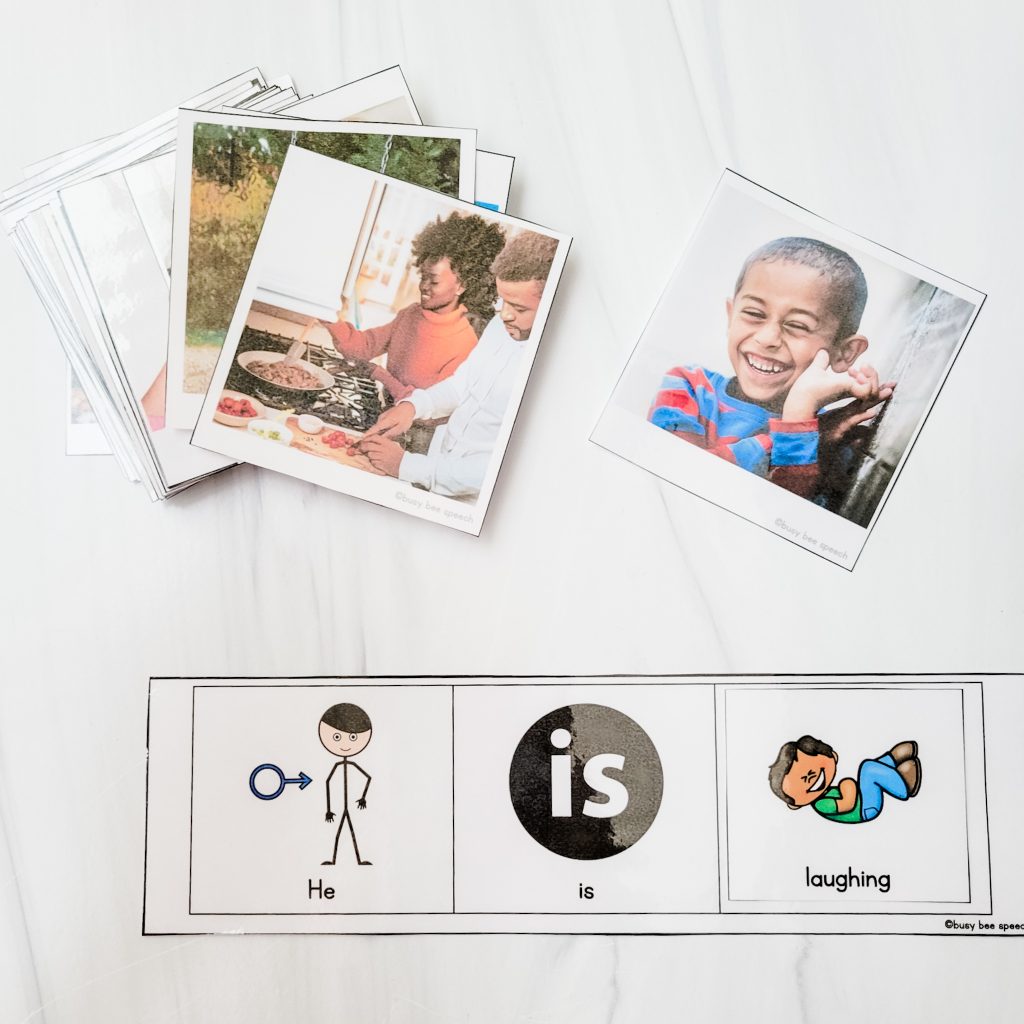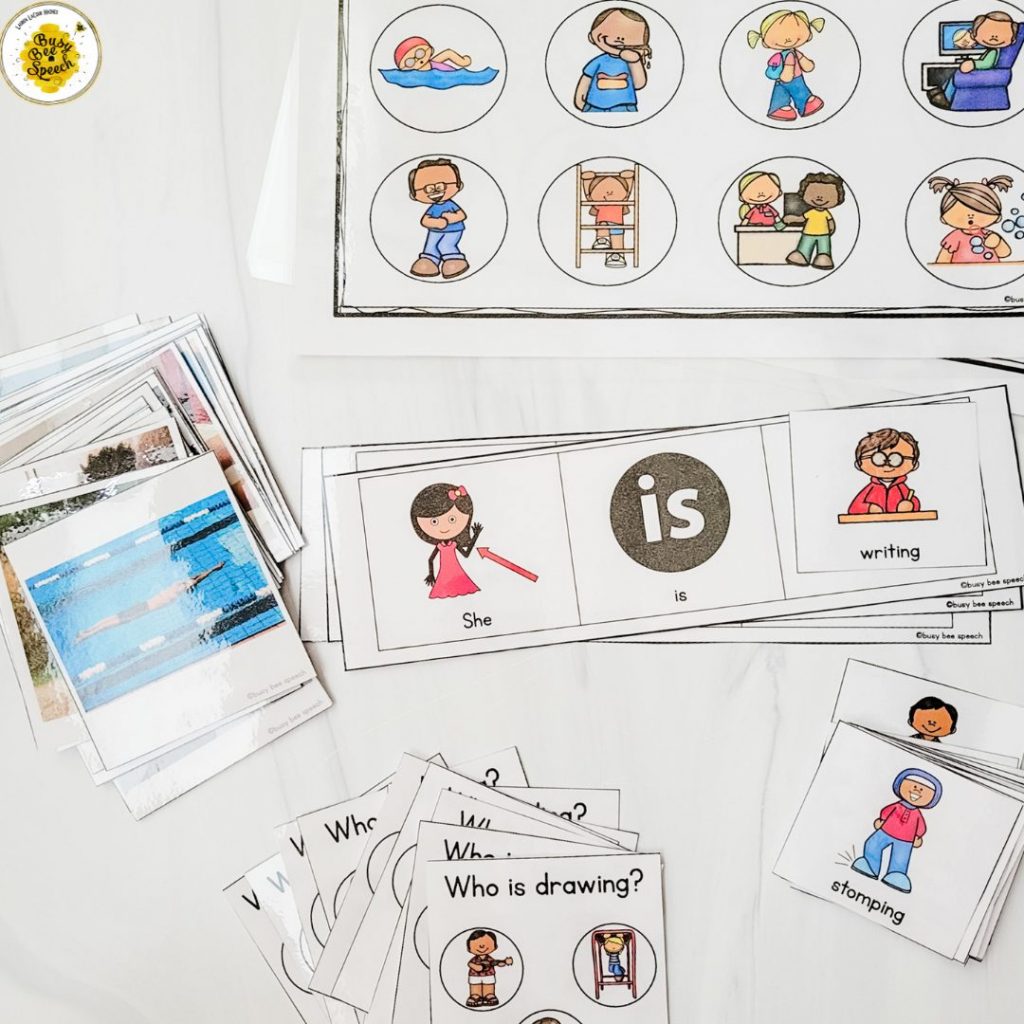One of the most common goals that I see in my preschoolers is identifying action verbs. This isn’t surprising. They need to understand actions before they are able to follow directions, give a command, or put sentences together.

Understanding how to teach action verbs to young children can be kind of tricky. If you show your student the same picture card over and over again and ask them to identify the action verb, they will likely memorize the card. They’ll seem like they are able to identify the action.
However, you don’t know if they are focusing on the object, person, or action in the picture. Do they really grasp the concept of actions in this case?
Let’s look at some research and a little of my experience to figure out how to teach action verbs to your preschoolers.
Shift the focus from the object/person to the action
It’s difficult to know what a student is focusing on when looking at a picture. Try getting the child to imitate the action first. You can use a picture card or perform the action yourself. See if the child can do some simple actions when you are teaching them.
Include multiple examples of the action in a variety of contexts
A study by Snape & Krott considered how to help students learn new actions and extend them to new examples. They found that students were only able to learn new verbs when they were showed 2 side-by-side videos of the same action with different objects. This demonstrated the importance of variety and presenting multiple exemplars.
When we are teaching action verbs, we want to include MULTIPLE examples of the action in a variety of contexts. You’ll want to include lots of different people, objects, and actions to present to students in order to teach verbs effectively.
Use a combination of play, pictures, objects, and videos
Model and repeat the action often. Kids need to hear verbs over and over again before they really start to understand and use them. We saw how important it is to provide multiple examples of each verb. Here are a few different ways to target a variety of examples in your sessions.
- Model the verbs with a variety of pictures. Use real pictures and clipart. Show the actions with different people and objects.
- Model the verbs during play. A toy house with little people are great for this. Pretend that the people or animals are doing any action.
- Show the student a variety of videos. Find action videos or GIFs to demonstrate different verbs. Use animals, people, and cartoons to show the different actions.
- Lastly, get the student up and moving by playing follow the leader. Have the student do actions with you (i.e. jump, sit, stand, crawl, walk, run, point, look). Pick a few verbs to focus on and do them over and over again.
Action Verb Mini-Unit
If you’re looking for a research-based resource to target those action verbs, then check out this Action Verb Mini-Unit. It’s perfect for providing lots of different contexts to reinforce over 36 different verbs.



I like this one because it makes me feel more confident in knowing how to teach action verbs with my littles. The students are having fun with hands-on activities but are learning important communication skills at the same time.
Here are a few of my favorite things about this resource:
- The activities are research-based and include tips for targeting action verbs with your students.
- It includes sensory bin activities, task cards, an interactive book, and play dough activities.
- The activities include both clipart AND real pictures for a variety of action word targets.
- There are several take-home pages, including a parent tip sheet with ideas for targeting action verbs at home.
- It includes a DIGITAL version of four different activities, which is perfect for virtual learning, teletherapy, and for using with a tablet in speech.
Learn more about it on TPT here. I hope some of these tips help you. Let me know your favorite ideas on how you teach action verbs to your students!














[…] a child shows an understanding of action verbs, we can expand language skills further by linking a verb to an […]